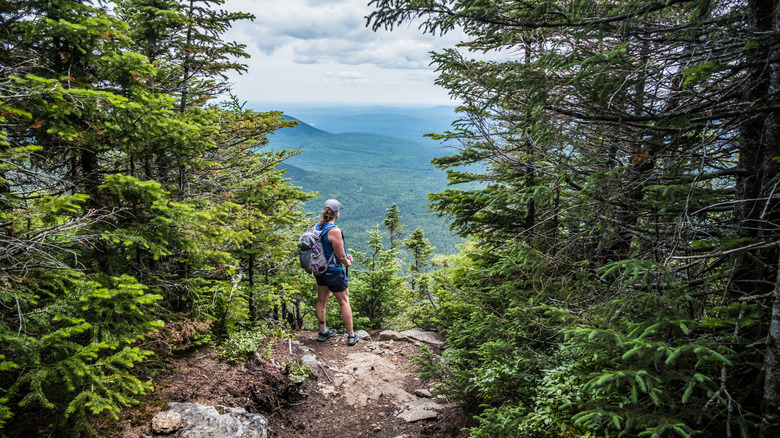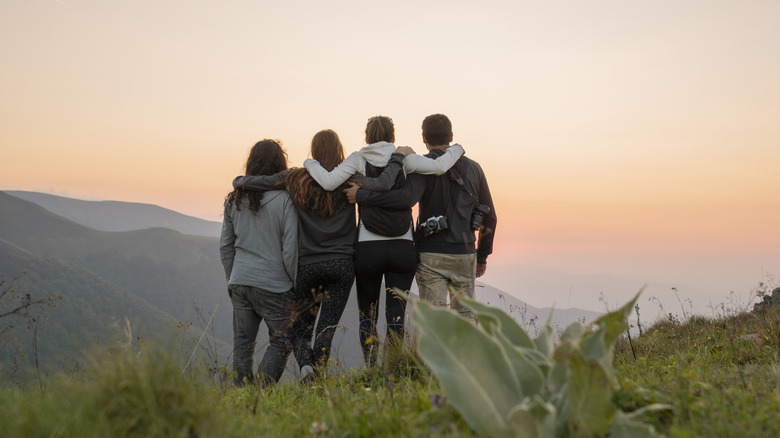The Longest Hiking-Only Footpath In The World Is In The United States
The United States is home to many natural wonders, but one of its most remarkable features is the Appalachian Trail (AT), the longest hiking-only footpath in the world. Stretching over 2,190 miles from Springer Mountain Georgia to Mount Katahdin in Maine, the Appalachian Trail is a symbol of endurance, natural beauty, and the unyielding spirit of adventure, making it one of the revered trails among America's Triple Crown of Hiking.
The idea of the Appalachian Trail was conceived in the early 1920s by Benton MacKaye, a forester and conservationist who envisioned a footpath that would provide an escape from the industrialized world. Construction began in 1925, with various hiking clubs, volunteers, and government organizations collaborating to bring MacKaye's vision to life. The trail was officially completed in 1937, though it has been rerouted and updated several times since. One thing that hasn't changed, however, is that it is only open to pedestrians.
Today, the Appalachian Trail winds its way through 14 U.S. states, passing through some of the most scenic and ecologically diverse landscapes in North America. The train climbs and descends the rugged terrain of the Appalachian Mountains, snaking its way through the Blue Ridge Mountains, dense forests of the Mid-Atlantic, and eventually the rolling hills and alpine regions of New England. The trail also passes by numerous bucket-list worthy national parks, including Great Smoky Mountains National Park, Shenandoah National Park, and White Mountain National Forest. Hikers experience diverse ecosystems from subtropical woodlands to boreal forests. Along the way, they are treated to mountain streams and secluded wilderness.
The AT's designation as a hiking-only footpath
Being designated as a hiking-only footpath means that the Appalachian Trail is exclusively reserved for pedestrian travel. This means whether you are embarking on a week-long backpacking adventure or a multi-month thru-hiking journey, you can experience the wilderness more intimately without having to share the path with horseback-riders, cyclists, or off-road vehicles. Limiting the trail to foot traffic enhances the tranquility for hikers. Without fast-moving vehicles or bicycles nearby, the risk of accidents is lower. This slow pace fosters mindfulness, allowing hikers to immerse themselves fully in their surroundings, listen to the sounds of nature, and enjoy the unhurried rhythm of walking.
By restricting the trail to foot traffic, the AT's integrity is also preserved. Vehicles — even bicycles — can cause erosion, disturb wildlife, and damage sensitive ecosystems along the trail. Without these, the wear and tear experienced on popular hiking trails is reduced. The trail maintains a rustic feel that mirrors early hiking experiences envisioned by its founders. It allows hikers to follow in the footsteps of the past, traveling in the same way that humans have moved through nature for centuries.
The hiking-only designate emphasizes a return to a more basic, low-impact form of travel. It connects hikers in a way that encourages simplicity and self-reliance, where progress is measured by footsteps, not speed or power. This makes the trail more challenging and rewarding for those who undertake it, especially for thru-hikers who travel the entire 2,197.4-mile distance by foot (via Appalachian Trail Conservancy).
Fostering a hiking community
A hiking-only trail fosters a unique community atmosphere. Hikers who share the trail face similar challenges and rewards, whether they're tackling steep inclines, navigating rough terrain, or enjoying the serenity of the forest. The shared experience of walking creates a bond, and the trail culture includes mutual respect and support among hikers. Everyone is on the same journey. There are no shortcuts, there are no other ways of getting around. As a result, hikers often form tight-knit bonds with fellow travelers.
The Appalachian Trail has become a cultural icon in the United States, symbolizing a return to nature, perseverance, and the power of human spirit. Every year, thousands of hikers attempt to complete the entire trail. In fact, according to Outside magazine, in 2017, 3,400 thru-hikers set out to tackle the trail — the most foot traffic that the trail has seen in the 80 years since its inception.
Completing the Appalachian Trail is a massive challenge, requiring months of preparation, physical stamina, and mental resilience. This is why the journey has inspired countless books, documentaries, and personal stories, reminding us of the profound connection between people and the wilderness.


